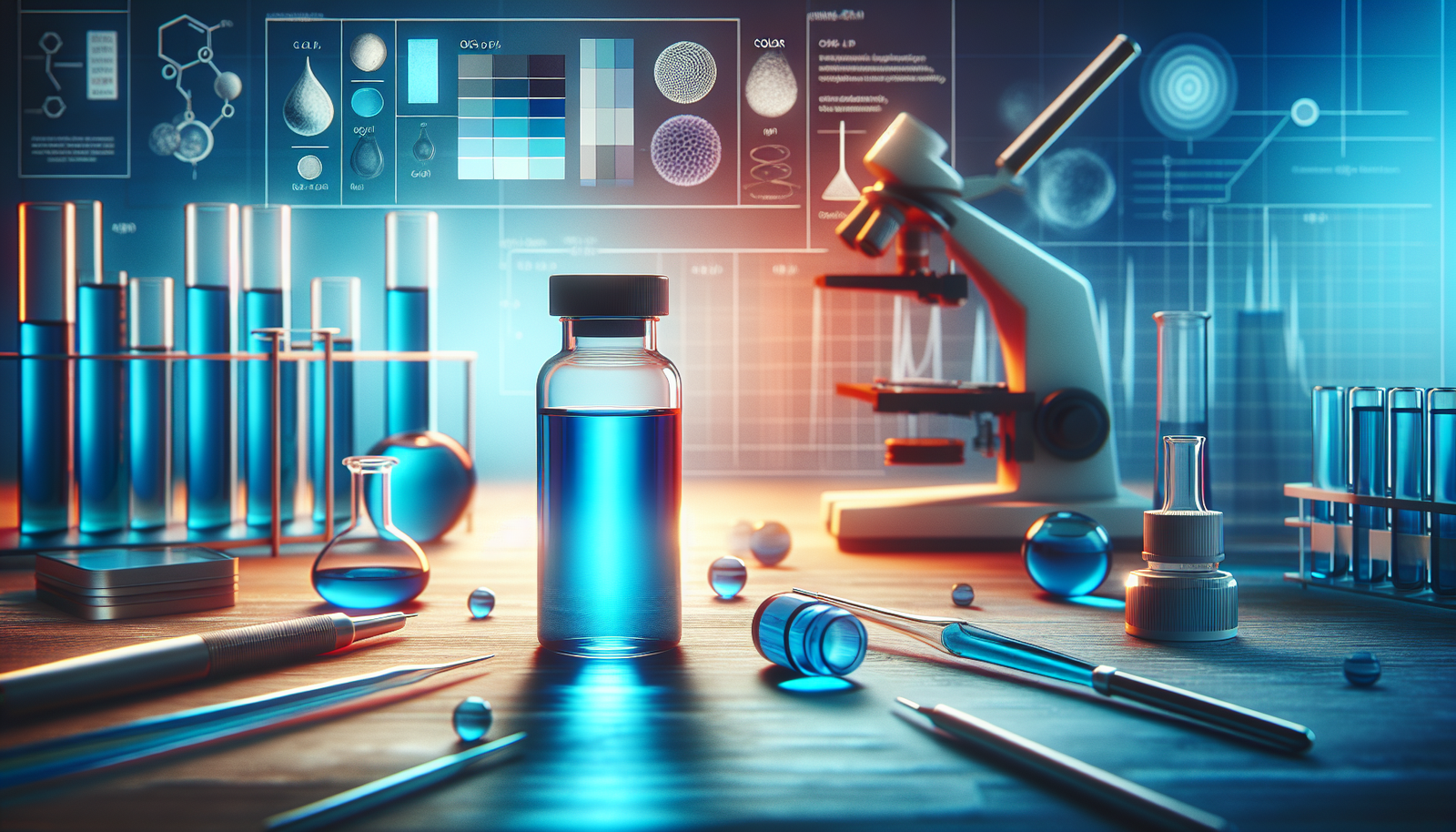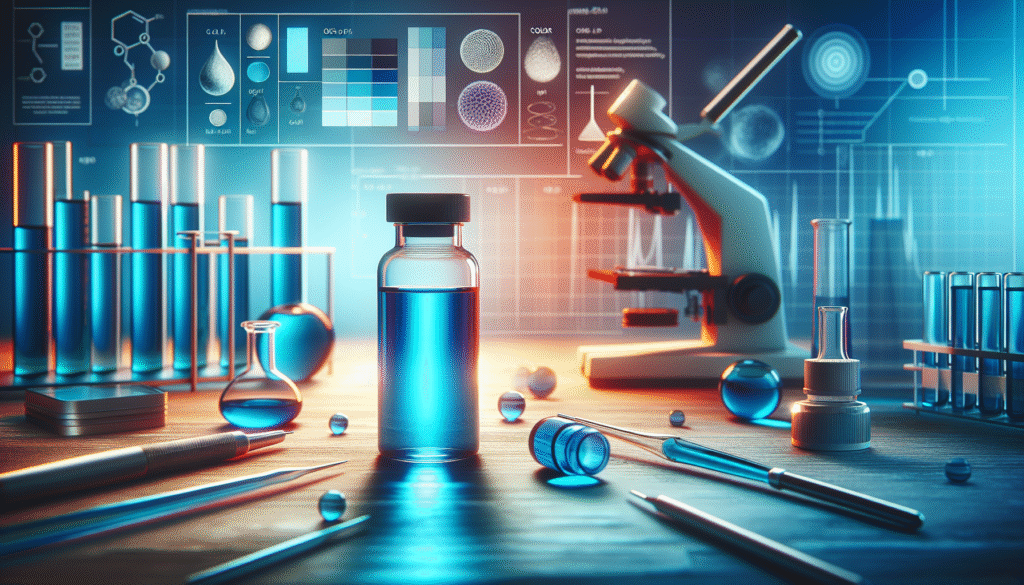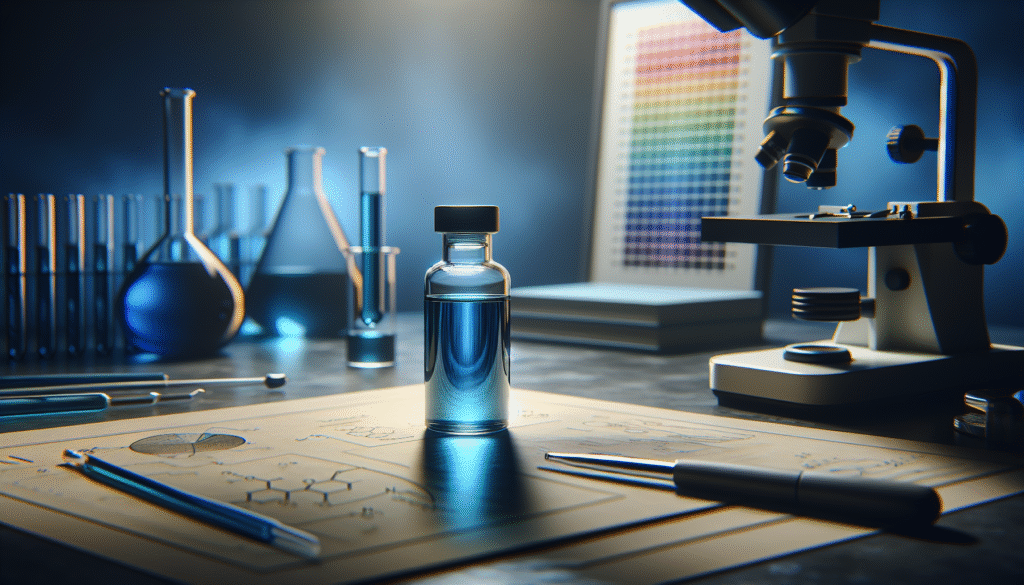
Choosing the right concentration of methylene blue can significantly impact its effectiveness for various applications. Have you ever considered how the concentration level might affect the results you achieve?
Understanding Methylene Blue
Methylene blue is a synthetic dye that has been used for over a century across different fields, including medicine, biology, aquaculture, and even chemistry. Its versatility stems from its properties as a staining agent, redox indicator, and potential therapeutic compound. The application you intend to pursue will dictate the appropriate concentration level required for optimum results.
The Chemical Profile of Methylene Blue
At its core, methylene blue is a thiazine dye that exhibits distinct chemical characteristics which influence its reactivity and utility in various contexts. The chemical structure consists of a heterocyclic aromatic compound, with the formula C16H18N3S, which allows it to absorb light in the blue spectrum. Understanding its molecular composition and how it interacts in different environments is key to determining the right concentration.
Forms of Methylene Blue
Methylene blue is available in various forms, including powder, liquid solution, and as part of specific formulations for certain applications. Before choosing a concentration, it’s essential to familiarize yourself with these forms:
- Powdered Methylene Blue: This form requires dilution in water or other solvents to achieve the desired concentration for use. It offers flexibility in creating custom solutions.
- Liquid Solution: Often pre-diluted for convenience, these solutions ensure consistency and ease of use for specific applications such as laboratory experiments or therapeutic uses.
- Formulations: Certain products may contain methylene blue alongside other compounds designed to enhance its effects or stability.
Applications of Methylene Blue
The application of methylene blue varies widely, and each use necessitates a specific concentration. Understanding how different concentrations of methylene blue function in various contexts is crucial, whether you are pursuing medical treatments, laboratory experiments, or aquaculture applications.
Medical Uses
In medicine, methylene blue serves several functions:
-
Antiseptic Agent: Methylene blue has antiseptic properties, beneficial in treating infections. Typically, a lower concentration is effective for topical applications.
-
Diagnostic Agent: Used in certain diagnostic tests, including urine tests for certain types of infections, a concentrated solution may be utilized to enhance visibility.
-
Therapeutic Agent: In cases of methemoglobinemia, a condition where hemoglobin is unable to carry oxygen effectively, a specific and regulated concentration is critical. Medical practitioners generally administer it in a controlled manner, often around 1% for intravenous use.
Laboratory Applications
In a laboratory setting, methylene blue finds extensive use in various experiments:
-
Staining Procedures: Methylene blue acts as a stain, particularly in histology or microbiology. The concentration required typically ranges between 0.1% to 0.5%, depending on the specimen type and the intended clarity of the staining.
-
Redox Indicator: In redox titrations, concentration levels can affect the transition colors observed. Generally, a higher concentration is necessary for a clear visual shift in color during reactions.
Aquaculture
Aquaculture practitioners utilize methylene blue primarily as an antimicrobial and antifungal agent. Its application in fish farming can help manage diseases and enhance fish health.
-
Disease Management: Lower concentrations (typically 1-2 ppm) are effective for treating aquatic diseases without harming the fish.
-
Egg Treatment: For fish eggs, a diluted solution is often employed to prevent fungal infections. Concentrations around 0.5 ppm are generally recommended for this purpose.

Selecting the Right Concentration
Choosing the appropriate concentration necessitates an understanding of your specific needs and the intended application of methylene blue.
Factors to Consider
-
Intended Use: The concentration for medical, laboratory, or aquaculture use varies dramatically; therefore, it is imperative to tailor your choice based on your precise objective.
-
Species Variability: In aquaculture, consider the species being treated; different fish may react differently to concentrations of methylene blue.
-
Scale of Application: Larger volumes may require different concentration levels to achieve the desired effect; hence, adjusting based on the scale of your project is vital.
-
Safety Standards: Ensure that your chosen concentration complies with any relevant safety protocols or guidelines, especially in medical or consumable applications.
Recommended Concentration Ranges
To assist in determining the appropriate concentration, consider the following table summarizing recommended ranges for various applications:
| Application | Concentration Range |
|---|---|
| Medical Use | 0.1% – 1% (varies by intent) |
| Laboratory Staining | 0.1% – 0.5% |
| Redox Indicator | 0.5% – 1.0% |
| Aquaculture Treatment | 1 ppm – 2 ppm (general use) |
| Egg Treatment | 0.5 ppm |
Preparing Methylene Blue Solutions
Once the desired concentration is established, proper preparation of the solution is essential for achieving accurate results.
Step-by-Step Preparation
-
Gather Materials: Ensure you have the required materials—methylene blue powder or liquid, a graduated cylinder, distilled water, and a stirrer.
-
Calculate Volume: Based on your desired concentration and total volume of solution, calculate the amount of methylene blue required.
-
Dissolve: If using powdered methylene blue, accurately measure the powder and dissolve it in distilled water. Stir until completely dissolved to avoid clumps.
-
Store Solutions: Properly label and store prepared solutions, considering light-sensitive properties, preferably in amber bottles to prevent degradation.
Handling and Safety
Safety is paramount when working with methylene blue.
-
Personal Protective Equipment (PPE): Always use gloves and goggles to protect your skin and eyes.
-
Containment: In case of spills, ensure to have appropriate containment measures in place to manage any accidents effectively.
-
Disposal: Follow local regulations for the disposal of chemical waste, especially when dealing with concentrated solutions.

Troubleshooting Common Issues
Even with meticulous preparation, you may encounter specific challenges when implementing methylene blue at various concentrations. Recognizing these issues and understanding how to resolve them is essential for successful application.
Solution Clarity
If a solution appears cloudy or does not dissolve properly, check the following:
- Quality of Water: Ensure distilled water is used, as impurities can affect clarity.
- Concentration: Ensure that the concentration does not exceed solubility limits.
- Mixing Time: Allow sufficient time for e thorough mixing; incomplete dissolution may result in cloudiness.
Inconsistent Results
If the results of your experiment or application appear inconsistent, consider the following:
- Concentration Accuracy: Double-check measurements to ensure correct quantities were used.
- pH Levels: Variations in pH can affect the performance of methylene blue, especially in laboratory environments.
- Temperature: Ensure that the temperature during application remains consistent, as it can impact both solubility and effectiveness.
Side Effects in Medical Use
If using methylene blue for medical purposes, monitoring for side effects is critical. Potential reactions include:
- Allergic Reactions: Some individuals may exhibit allergic responses, necessitating immediate medical care if severe symptoms occur.
- Methemoglobinemia: In rare cases, methylene blue used incorrectly can exacerbate the condition it’s meant to treat.
Final Considerations
Choosing the right concentration of methylene blue is not just about individual preference but involves a series of careful evaluations and adjustments based on extensive knowledge of application benefits, risks, and outcomes. A systematic approach allows for optimal use of this versatile chemical across various fields, whether in healthcare, laboratory analysis, or aquatic management.
Maintaining vigilance throughout the process and continually educating oneself on best practices can foster successful outcomes. Ultimately, the capacity to select and utilize the correct methylene blue concentration will enhance its effectiveness and your working relationship with this valuable compound.
By adhering to thorough research protocols and following best practices, you can confidently navigate the complexities associated with methylene blue to meet your specific needs.